
Helping Parents Grow Lifelong Readers with resources for 0 to 13+ years of age.
- Subject:
- English Language Arts
- Material Type:
- Primary Source
- Author:
- Jordan Urtso
- Marcel Proust
- Tomie Depaola
- Date Added:
- 04/26/2021

Helping Parents Grow Lifelong Readers with resources for 0 to 13+ years of age.

The Building Literacy with Technology in Elementary guide provides articles, samples, and lessons to find new ideas and approaches to engage learners in building skills in reading, writing, listening, and speaking.
In the Building Literacy with Technology in Elementary guide you will explore:
- Ways to get students making in language arts,
- Take a creative approach to student work with informational text,
- How to motivate students by creating their own comics, cartoons, and graphic novels.
The guide includes lesson plans where students:
- Design a new cover for a book they are reading to demonstrate comprehension and explore character, plot, setting, symbolism, and conflict.
- Create a digital scrapbook that showcases the viewpoint of the main character of a novel.
- Illustrate and translate the meaning of an idiom to help others learn these examples of figurative language.
- Write and produce an animated tall tale about a famous person.
- Explore character, plot, and theme and learn to write persuasively as they develop a movie-style trailer for a book they have read.
- Learn and practice persuasive writing and presentation skills.
- Personify an object and write a story as part of an online book or animated adventure.
- Analyze verse and explore meaning by creating a visual poem.
These articles, lessons, and strategies engage students through creative technology to maximize student literacy skills.

The Building Literacy with Technology in Primary guide provides articles, samples, and lessons to find new ideas and approaches to engage your students in building skills in reading, writing, listening, and speaking.
In the Building Literacy with Technology in Primary guide you will explore:
- Engaging new readers and writers with creative technologies
- Using digital storytelling in the primary classroom
- Inspiring every student to be an author
The guide includes lesson plans where students:
- Explore initial sounds through the creation of a classroom ABC book.
- Learn to write using alliteration and create illustrations that support and reflect their writing.
- Practice writing and illustrating as they create a page in your class’s adaptation of their favorite pattern story.
- Write a letter to their parents, or classroom teacher, to persuade them to get a new pet, supporting their opinion with reasons and examples.
- Research an animal and create a riddle to showcase their knowledge and engage other students in the natural world.
- Create a book review on a card or 3D cube to help others choose books they will enjoy.
- Learn about the haiku poetry form and write and illustrate their own haiku poems.
- Write how-to stories about getting ready for school and publish them to share with their families and to use at home.
These articles, lessons, and strategies engage students through creative technology to maximize student literacy skills.
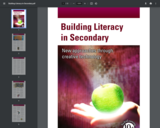
A combination of focused activities and creative, open-ended technology projects can help you take a new approach to building literacy with your secondary students. Use these articles, samples, and lessons to find new ideas and approaches that will work for your learners.
The Building Literacy in Secondary guide includes:
- Articles
- Reading, Literacy, and Digital Creativity
- SPLAT...POW...WOW! Motivating Readers and Writers
- More Than Just a Writing Prompt
- Supporting 6+1 Trait Writing
Lesson Plans
- Create a Video Poem
- Design a Book Cover
- Character Scrapbook
- Not Your Average Portfolio
- MyBook (Fakebook) Page
- Digital Book Trailers
These articles, lessons, and strategies engage students through creative technology to maximize student literacy skills.

Child-Led, Hands-On, Active Learning for Kids including:
Math
Reading
Writing
Sports and Recreation
Colors
Multilingual Teaching Tips (lots of Chinese resources)

This Module outlines Collaborative Strategic Reading (CSR), a strategy for helping students to improve their reading comprehension skills. In CSR, students work together in small groups to apply comprehension strategies as they read text from a content area, such as social studies or science (est. completion time: 1 hour).

The Can Do Kids website is full of ready-made resources to support teachers and learners in their study of orthography.
You have to sign up for an account, then can download free resources, including beautiful posters, that are connected to picture books supporting a variety of orthographic lessons. Please note, some items have a cost, but there are still many free resources on this site.

This lesson for English Language Learners (ELLs) discusses an environmental policy that is being implemented in many places around the world, carbon taxes. In this lesson, learners will practice reading, listening, speaking and writing. All activities are automatically graded with feedback provided to the learner upon submission.

This lesson provides teachers with support for using text-dependent questions to help students derive big ideas and key understandings while developing vocabulary using the modern fairytale, Cendrillon. In this Caribbean Cinderella story, Cendrillon is treated as a servant by her step-mother and half-sister. Nannin, the gogmother, uses a magic wand to ready Cendrillon for a ball, where Cendrillon meets a rich man's son, Paul, who falls in love with her and finds her when she is lost to him.

Young Jose Mendez is a terrific centerfielder but a weak hitter. Jose wants his father to be proud of him. When his father calls him a "Born Outfielder," Jose realizes that his father is proud of his abilities on and off the field.

This lesson provides teachers with support for using text-dependent questions to help students derive big ideas and key understandings while developing vocabulary using the children's novel, Charlotte's Web. A story of friendship and loyalty between Wilbur, a spring pic and a grey spider named Charlotte. Wilbur learns that he is being fattened for slaughter in the fall. Wilbur is at first disgusted by the fact that charlotte eats flies, but comes to both appreciate and love her.
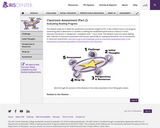
This Module explores in detail the assessment procedures integral to RTI. It also outlines how to use progress monitoring data to determine if a student is meeting the established performance criteria or if more intensive intervention is needed (est. completion time: 1 hour). Note: This Module is part of a series dealing with methods of classroom assessment and focuses specifically on reading assessments.

"Cocoa Ice" is set in the early 1800s and describes the exchange that occurs when a trading ship from Maine travels to the Caribbean village of Santo Domingo. The story is told in two parts, each part narrated by a girl who lives in one of these locations.

This lesson for English Language Learners (ELLs) introduces an important job for the future, computer programmer. In this lesson, learners will practice reading, listening, speaking and writing. All activities are automatically graded with feedback provided to the learner upon submission.
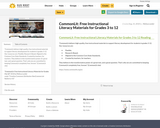
"CommonLit delivers high-quality, free instructional materials to support literacy development for students in grades 3-12. Our resources are:
Flexible;
Research-Based;
Aligned to the Common Core State Standards;
Created by teachers, for teachers.
They believe in the transformative power of a great text, and a great question. That’s why we are committed to keeping CommonLit completely free, forever." (CommonLit site)
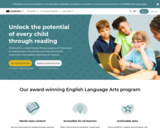
"CommonLit delivers high-quality, free instructional materials to support literacy development for students in grades 3-12. Our resources are:
Flexible;
Research-Based;
Created by teachers, for teachers.
They believe in the transformative power of a great text, and a great question. That’s why we are committed to keeping CommonLit completely free, forever." (CommonLit site)
Teachers can search for content by grade, theme, content type, genres, literary devices, and more. Alternative options are offered for students that may require adaptations for reading an easier level.
Parent guides are also provided.
Benchmark and ongoing assessments are available.
360 Curriculum provides full integrated units E.g., Unit 1 Characters Who Change and Grow which includes a baseline assessment, vocabulary activities, reading lessons, writing lessons, quiz, grammar activities, media exploration, discussion, and a culminating task.
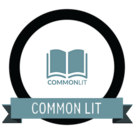
Please watch the following video tutorial from Rob Fleisher from CommonLit to guide you through using the post-assessments avaiable in CommonLit.
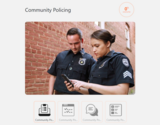
This lesson for English Language Learners (ELLs) discusses a movement that brings police officers closer to the people they serve, community policing. In this lesson, learners will practice reading, listening, speaking and writing. All activities are automatically graded with feedback provided to the learner upon submission.

Sun West:
To access the Professional Development Portal, it is suggested that you log into CommonLit via the Clever portal.
Once you are logged into CommonLit, you will see a link the Professional Development Portal in the top right corner of your screen.
If you would like to access CommonLit without using clever request a a link to reset your password to get the credientials you need to log in.
(Copy and paste this link into your browser:
https://app.salesforceiq.com/r?target=62acedc67260dc45de29089f&t=AFwhZf0hDGdDp4kDCoHpzT7yyc10ty62GxL8NwsnB36QfxvhDyAhDeKV0625nlY6biBXvmYpdKW5HOfQDIMNv-n_ItuD6QR1CLMn2cEoa3FBxdLQpC-7lEegNAvH0-R4zEkj_qWqoOUn&url=https%3A%2F%2Fwww.commonlit.org%2Fen%2Fpassword_reset_requests%2Fnew

The Conscious Kid is an education, research and policy organization that supports families and educators in taking action to disrupt racism, inequity and bias